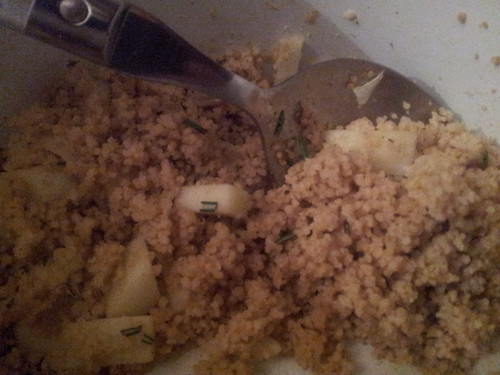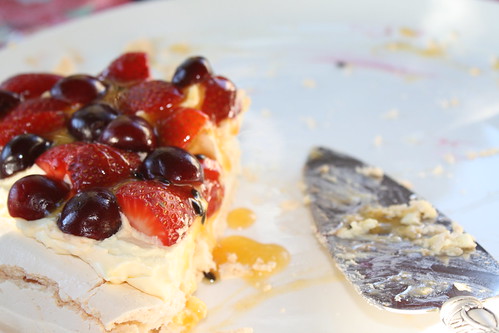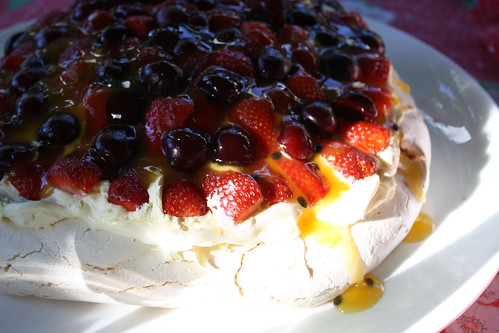
My apologies for yet another really awful photograph! When this salad looked at its best I was too busy celebrating New Year to be photographing!
Disclaimer: San Remo sent me the wholemeal couscous.
Another couscous recipe. After the success of the 50-50 white/wholemeal couscous combination of my last effort, I decided that the salad I took along to a New Year’s Eve party could be 100% wholemeal couscous. I picked a recipe for a warm couscous salad from Jason Atherton’s book Gordon Ramsay’s Maze. This recipe was considerably less hassle to put together (despite having to rustle up the ras el hanout) and I certainly now have plenty of ideas for my own couscous salad creation (no doubt that recipe coming at some point … though this isn’t a blog about couscous so you might have to wait a little).
As usual, I had to make adjustments to Atherton’s recipe (it had raisins in it – I’m really not a fan of raisins in savoury food).
In a bowl, put 1 cup of couscous, a good pinch of salt, 2 tsp of ras el hanout, and a generous glug of good quality olive oil. Pour over 1 cup of boiling water, cover with cling film and leave to sit for 15 – 20 minutes.
With couscous – remember 1 cup of couscous, 1 cup of water or stock.
While the couscous is sitting, peel, core and then finely dice a Granny Smith apple. Finely chopping an apple is more difficult than it sounds (it’s not a shape that lends itself well to being chopped) so don’t get too hung up on size and evenness. Mix some lemon juice through the apple to stop it from discolouring (err on the side of more lemon juice, rather than less).
When the couscous has absorbed all the water, fork it through to fluff it up and then mix through the apple. Stir through some lemon juice (to taste – this depends a bit on how much you used on the apple), lemon rind, and some chopped coriander and rosemary.
I actually left out the coriander as we didn’t have any to hand, but I’d recommend using either that or parsley because, if nothing else, it will add some vibrant green to an otherwise somewhat yellow coloured salad!
This is a salad that you need to eat either the day you make it or the next as the rosemary flavour gets stronger and stronger and eventually dominates.
This couscous salad got a reasonable tick – I took it to a New Year’s Eve party and people who said they didn’t normally eat couscous politely said they enjoyed it. The quantities are much more reasonable here (it was served at a BBQ of 9 people and there was enough left overs for one meal for Andy and me). Andy and I decided that, while this too needs some tweaking, we’re on our way to the perfect couscous salad!



